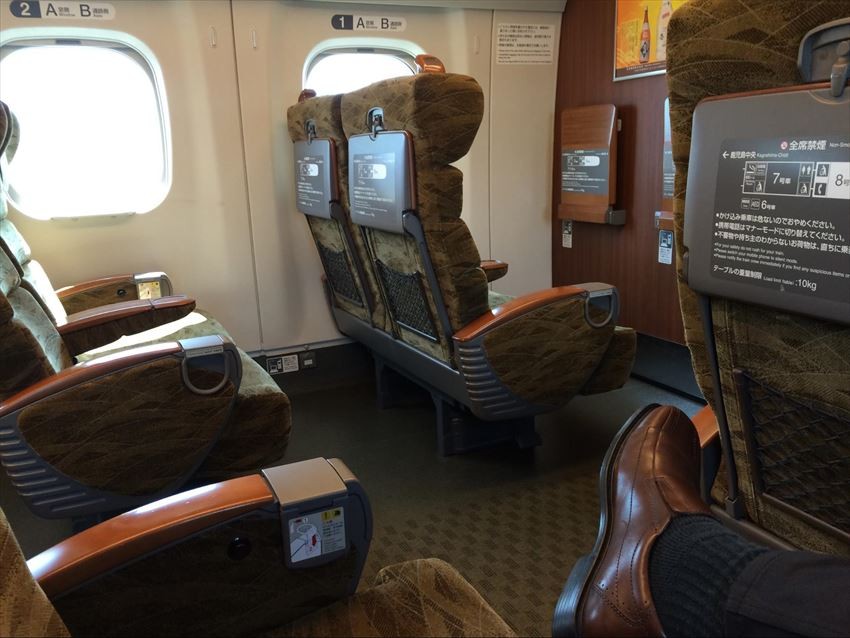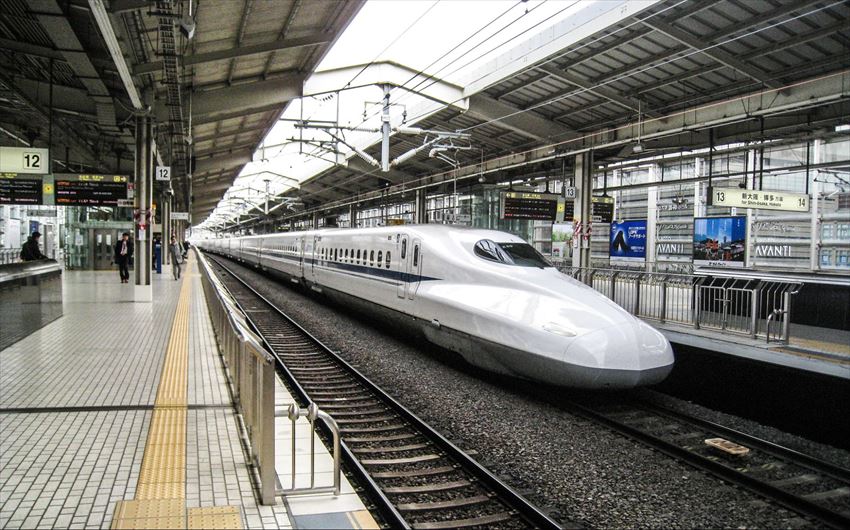
The Shinkansen
The Shinkansen (translation: new trunk line) is the name of Japan's sophisticated, high-speed, mass-transit series of electric trains. Between its introduction and today, it has carried over 10 billion passengers across the country in comfort, safety and most notably at incredibly high speed. In fact, the current series of Shinkansen achieve up to 320 km/h on their daily routes. The Shinkansen is both an exciting way to explore Japan as well as a great opportunity to experience what is irrefutably mankind's most advanced and efficient form of mass transportation.

The Shinkansen program began ambitiously. One goal from the outset was to impress the visiting nations of the world during the 1964 Tokyo Olympics. Its debut was a harbinger to its future of unrivaled punctuality as the train was introduced on the first of October in 1964...ten days before the start of the games. However, this wouldn't have been possible without the contributions of many brilliant people including Tadanao Miki (the aircraft designer who envisioned the train's sleek body) and Tadashi Matsudaira. Matsudaira was the engineer who ingeniously solved the high-speed train's stability issues. Before the Shinkansen, trains would suffer from what's referred to as "hunting motion".
The hunting motion is the horizontal motion of the train's wheels between the rails. He solved the problem by designing a combination spring that utilized both an air suspension (to control vertical oscillations) and coil springs which controlled horizontal movements. This breakthrough, along with fastidious maintenance, provided the means to create the revolutionary mass-transit system that the country continues to enjoy today. The Shinkansen is also an unparalleled system of safe transport. In over fifty years there hasn't been a fatality to a passenger on the train and their efficiency has set the world standard.

The experience of riding the Shinkansen is unlike any other train service in the world. Expect the trains to be exactly on schedule. In fact, the annual average for tardy Shinkansen trains is 54 seconds. There is ample storage space either above passenger seating or between the rail cars for luggage. Restrooms and even designated smoking areas are standard fare. Depending on the trip, meals are provided, however, it's best to purchase a meal in a train station or outside location as the on-train options are limited. A window seat will enable the opportunity to view the scenery and the ride is quiet enough to enjoy a book or media (with headphones). Proper passenger etiquette dictates being considerate to other riders and any form of obtrusive noise or behavior is prohibited.

When using the Shinkansen it's important to closely observe the arrival and departure times as they are key to the train's efficiency. If necessary, allow an additional allotment of time to navigate the stations and consider the time spent finding the optimum route and/or asking for assistance. Each station has offices dedicated to providing customers with tickets and route information/times/etc. If eligible, purchase a JR (Japan Rail) Pass in advance*. The cost varies, but they are available in seven, fourteen and twenty-one-day intervals. Depending on one's itinerary, this can be more cost-effective than purchasing each trip individually. Also, consider the other options as well. Other options include local or rapid transit trains, buses, and even flights. Train tickets can always be purchased individually, but a JR Pass offers the flexibility of utilizing numerous trains and even some buses**.
Enjoy the elegance of the technologically fascinating Shinkansen trains while visiting Japan. The future holds even greater potential as evidenced by the (now testing) Limear Chou Maglev train. Magnetic levitation will indeed be the next evolution of Japan's Shinkansen. Currently, the Linear Chou Maglev train is reaching speeds of up to 500 km/h and can be viewed by visitors at its testing facility in Yamanashi prefecture. It will undoubtedly continue Japan's long and continued story of excellence in mobility.
*Eligibility and current pricing for the JR Pass can be found at
www.japanrailpass.net/**The JR Pass excludes the Nozomi and Mizuho trains.
※This article was published in November 2016.※

Comments